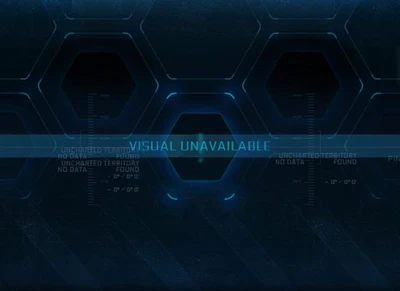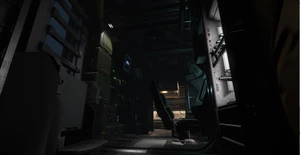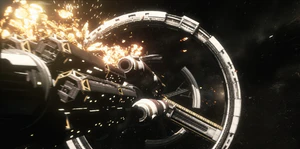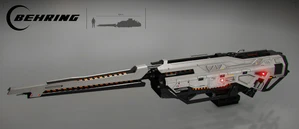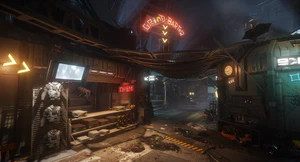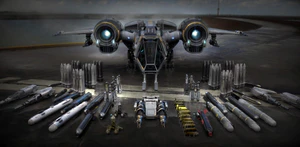Greetings Citizens!
Welcome to the June 2016 monthly report! June was a most excellent month for Star Citizen, with the release of Star Citizen Alpha 2.4.0 and the 2.4.1 followup patch. 2.4 added a number of forward-facing elements to the game, including shopping and our first large flyable ship (the Starfarer)… but it was even more important ‘under the hood’ as it introduced persistence to Star Citizen! Persistence is essential to making a constantly-evolving multiplayer world, and there’s a lot for us to build on in future patches.
We also launched the Drake Dragonfly this month, our so-called ‘space motorcycle’ and the community responded with excitement! These cool, little ships are going to be so much fun to play, we’re eager to see them running around Port Olisar (and then across the surface of our planets!)
We hope you’re enjoying your time in Crusader, and we appreciate the incredible effort the community has put into helping test these game builds. With a game as complex as Star Citizen, intended to be played by pilots around the world, there’s so much in the way of architecture and systems that needs thorough testing in the real world… so the thousands upon thousands of players who’ve submitted bug reports are truly appreciated. Here’s the monthly report:
CIG LOS ANGELES
Go West, Young Citizen

Summer is finally come and the heat is on; not just in Los Angeles but in the ‘Verse as well. We are already half way through 2016 and just like the changing of the seasons, there has been quite a bit of change in Star Citizen. So let us take a gander at what the Los Angeles office has been up to for the month of June.
Engineering
For the Los Angeles Engineering team, the ItemSystem has been the number one priority across the team. However, over the course of any software development, bugs arise and decisions need to be made whether and when to divert resources to address them. Working on Star Citizen is no different. The Engineering team did get a boost in headcount with the addition of Steven Humphreys, an engineer from the UK office who has transferred to Los Angeles.
Lead Paul Reindell has always led by example. Not only is he involved with programming the game, he finds time to conduct interviews, training and mentoring the Engineering team’s newest members, and still is able to fix and close out multiple game bugs. That leadership is reflected in how industrious the Engineering team is.
Ariel Xu over the past few months has been steadily working on developing the PortEditor tool which drastically assists with how designers edit content by allowing dynamic adding/editing of the contents of the Port. Previously, it was necessary to edit the asset offline and reload it manually into the editor for every change. It’s easy to take something like that for granted by expecting that it should exist, but remember – tools don’t build themselves! Engineers Chad McKinney and Patrick Mathieu have completed major steps in improving the Use/Interaction system of Star Citizen.
Chad Zamzow’s focus includes implementing revised, component-specific IR/EM signatures, cooling systems, and shield emitter changes. While Mark Abent has been implementing features for the power plants, ship seat interactions, and also spent a large amount of time fixing bugs for the 2.4.0 release.
Tech Design
The Tech Design team is where many of the cool features you see in-game are fleshed out and implemented after the Engineering team has created the code and Art the assets. Being a part of the Tech Design team is more than just coming up with brand new ideas to implement in the game. The technical aspect is being able to understand the tools and capabilities of the game engine and being able to design features while remaining within the boundaries of what the tools are capable of. This is what makes our Tech Design team incredibly valuable to the development of Star Citizen. With that in mind, let’s take a look at what the Los Angeles Tech Design team has been up to in the month of June.
Starting with Tech Design Lead Kirk Tome, the number of tasks and bugs he has closed out is on the right side of hilarious. A total of 28 bugs and tasks have been resolved this month by Kirk alone of all shapes, sizes and durations. Many of the features completed this month are fundamental design tasks such as updating new information regarding the Cooling/Heat functionality of ships, balancing such as increasing the fuel tank size for the Xi’An Khartu-al, and fixing clipping or collision issues with the Mustang Delta and Drake Cutlass. This is on top of running the Los Angeles Tech Design team!
Calix Reneau’s focus has largely been on the Caterpillar and its various features that will expand Star Citizen’s repertoire of things you will be able to do in-game. The ship’s functional Tractor Beam installation, a new game mechanic, is one such feature of the Caterpillar and Calix has completed the design aspect of not just the Tractor Beam itself but also how the control terminals function. These are major milestones for in-game functionality and for the Caterpillar.
Matt Sherman’s tasks and bugs have largely surrounded the MISC Reliant. The final tech design for the Reliant has been completed along with multiple bugfixes which brings it one more step towards being available for players to enjoy.
Our newest Tech Designer, Stephen Hosmer, has already jumped in feet first and has closed out 33 bugs and tasks so let’s give a round of applause for the LA Tech Design team’s new guy. The majority of tasks completed by Stephen are adding new functionalities to Dataforge such as adding in tooltips that appear when performing a mouse-over of column headings and being able to mass edit cells. Ship-wise, Stephen has fixed issues on a bit of everything ranging from the Gladiator, Vanguard, Cutlass, Constellation Andromeda, and the Sabre just to name a few.
Art
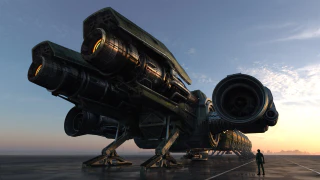
With 2.4.0 out the door, the Art team has been continuing its focus on even more new clothing, polishing up some of the new animations you’ve seen in our recent video content and character fidelity, and hammering out the ships they have been working on for the past couple months.
Starting with Forrest Stephan, 2.5.0 clothing support for the Character Team has been one of his top priorities along with helping the Character Team with support for Squadron 42. The LA Concept Art team has also been hard at work creating beautiful examples for the art team to render into 3D. Gurmukh Bhasin has been working on Space Station stylization/looks while Justin Wentz has been fine tuning and revising Caterpillar concept pieces. Fashionistas Jeremiah Lee and Cheyne Hessler have been hard at work on the clothing as well. Jeremiah has been drawing up designs for the Odin Munitions Corp uniform while Cheyne is working on shirt color variants and tons of other clothing assets.
Omar Aweidah has completed creating pristine materials for the Light Armor phase 1 and has moved on to the Medium Marine Armor. James Ku has been mentoring our artists and upping their game while working on creating asset geometry for the female model and in-game heads.
On the ship-side, there has been a lot of work on the Drake Caterpillar continuing through the month of June into July. Elwin Bachiller and Daniel Kamentsky have completed the interior, working on the Engineering Engine Room and Cargo Module respectively.
Animation
For Ship Animation, we are receiving back the motion capture animation for Imaginarium for the improved and quicker ship entry and exit animation that many of you have been hoping for, and the Austin Studio is hard at work adapting them ship-by-ship. On the PU side, our team is working on life animations for the PU and for Squadron 42, working with Design to get workzones, mess halls, nightclub and bars, medical and all manner of world life animations into the game.
On the FPS side, the team is working on finalizing the feel of the gameplay for the base stocked weapon (rifles, shotguns, etc.) and pistol animations and also working on animations for a railgun. We are also working on the cover system, assuring that the distances for Players leaving cover is consistent and readable and also increasing the degree of visual feedback for when the Player is in the cover state. We are also working on updating and improving the jump mechanics and animations as well as committed a hip direction switch that happens when you are with no weapon- your hips will flip naturally to the direction you are going with no weapon, but stay in the right facing when using a stocked weapon.
Global Technical Content
As usual, the Global Tech Content team has been busy at work on a large range of features. Starting with their fearless leader, Sean Tracy, the armor and loadouts have been converted to use the new item system and Sean has now moved on to working on the Helmet 2.0 setup all while planning and scheduling tasks for the Tech Content team. He’s quite the busy guy!
The Radical Rigging Roughnecks, John Riggs and Gaige Hallman, each have had their hands full with various tasks. John has been working on the Male Navy Medical Doctor asset rigging and has started reviewing PU clothing, while Gaige has been creating the female clothing volumes and is doing R&D on standardizing neck sizes.
Mark McCall has completed work on creating character archetypes for Squadron 42 along with male Shubin miner uniform animation while Matt Intrieri has been hammering out too many bugs to list but has emphasized his work has touched on lighting, LODs, VFX, and is now working on fixing damage issues on the Drake Cutlass.
Associate Tech Artist Patrick Salerno has also been face down doing bug fixes that the QA team finds and has been primarily focused on missing asset issues and fixing bugs that occur when developers use the editing tools we have.
Finally, one of our newest to join the Tech Content team, Erik Link has completed a tech implementation pass for inspecting weapons as well as implementing assets in the game through Mannequin.
Quality Assurance
The Los Angeles QA team spent the majority of June, along with the Austin QA team, working on 2.4 and then prepping things for 2.5. LA QA Lead Vincent Sinatra led the Quality Assurance team in taking a preliminary look at procedural planets and are very excited with the progress we are seeing. On the bug front, our primary focus was on hammering away at the shield system for ships though we also took a pass at testing the Mustang, along with a review of the Reliant by taking preliminary flight tests in order to move it towards getting it flight-ready.
With Vince at the helm, our QA testers have had quite a bit on their plate. Colby Schneider has done quite a bit of exploratory testing in examining persistence in the PU as well as taking early swings at the procedural generation for planetary exploration. Colby has also performed some very preliminary testing of the Dragonfly and the Reliant but both craft are still in not quite ready for public deployment.
Eric Pietro’s focus has been on the 2.4.1 patch being pushed out to the PTU by the time this report goes live, with primary emphasis on looking at network stability and in-game performance. Eric has been in constant communication with the deployment teams to monitor and test implemented changes in the PU. Apart from that, Eric has also been tasked at looking into EVA physics, keyboard/controller functionality, and in-game animations. QA testers actually do quite a lot on a day to day basis!
Conclusion
Like every month preceding it, June has been productive. New ship developments, new in-game assets, new art pieces, a new format for Around the Verse, and new faces. We are definitely not idle in the studio and we hope these updates give you a glimpse of what goes on in the LA office, so thank you for joining us this month and allowing us to share what we’ve been up to.
So, here’s to a sweltering July…
CIG AUSTIN
Texas Sized Game Dev
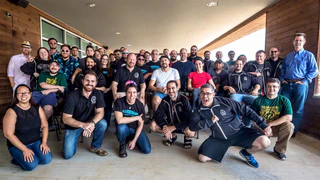
June was a busy month in the Austin studio with multiple teams burning the midnight oil, working hard, and making lots of progress. We tested the many progressive iterations of 2.4.0 and published this to the Live server! This represents a big milestone for the Austin team since this is the first public version with Persistence and sets the stage for many additional persistent features yet to come. Our team is growing on many fronts with new QA, DevOps and Game Support team members starting this month. Many new faces and fresh perspectives who have all hit the ground running in their respective disciplines!
Austin Development
The month of June certainly was a busy one! The dev team here in Austin has had their hands in several areas of the project like always, and worked diligently to support the release of SC Alpha 2.4.0 where needed.
The Backend Services Team reached a MAJOR milestone this month with the release of Persistence in 2.4.0. Jason Ely, Tom Sawyer, and Ian Guthrie have all but tied a neat little bow on this major feature that is crucial to any MMO. With persistence comes a broadened way of approaching the game development of Star Citizen, and it’s a welcome challenge for our team. Since the release of Persistence Jason, Tom, and Ian have been cleaning up and knocking out the edge cases that were causing issues on the Live environment. There were some crashes that cropped up with the persistence cache that have since been resolved and subsequently released with the 2.4.1 patch.
The Design Team in Austin is looking farther out to future releases now that 2.4.0 has gone Live. Another major feature of 2.4.0 that was run out of Austin was Shopping. Lead Designer Rob Reininger and his team have since turned their attention to further fleshing out the Shopping design, adding elements for Purchasing via Kiosk, Selling, Commodities, and Remote Storage to their to-do list. We’ve touched on all of these features this month, however our primary focus right now is iterating on feedback for Purchasing via Kiosk that we’ve received from CR. We want to get this functionality online soon so that we can add some new shops and inventory to the game, including Dumper’s Depot and its inventory of ship components and weapons. Design intern Robert Gaither has been playing around with a program called Axure that helps us visualize how the user experience will work with the Purchase Kiosk. We’re hoping to have our next iteration in front of CR for approval and signoff soon.

Our Ship Artists have been plugging away at their tasks for the Hornet F7A and the Herald. Both of those ships are in “Final Art” phases and the guys are going above and beyond to hit their deadlines.
Emre Switzer, Lighting Artist in Austin, has been working with the UK to wrap up an initial lighting pass on a new space station called GRIMHex. This environment is looking absolutely amazing and its thanks in no small part to Emre’s superb lighting skills.
Our Animation Team has shifted gears slightly this month. We’ve been getting data back from Imaginarium that Jay Brushwood helped run last month, and our Ship Animation Team has started reviewing this data and getting it into game. We’re getting data back for brand new ship enter/exit animations, and we’ll be using this data to reauthorize our ship animations to account for varying enter/exit speeds. We’re tracking well on the Hornet and Super Hornet right now, so look for speedier enter/exit animations on those ships soon!
Our PU Animation Team has altered course by request of Design to try and get some specific animation sets in game to be used with Subsumption, our peaceful NPC AI system. We’re going back and polishing animations for sitting on couches, leaning against walls, interacting with terminals, inspecting weapons, standing idles, and much more. With the aid of Erik Link, our new Tech Animator in our LA studio, we’re able to get these animations into game post-haste so that Design can start hooking these animations up for NPC’s to utilize! In addition to this, Lead Animator Bryan Brewer has been busy nailing down interaction metrics for several of our animation sets, including Sitting on Couches, Getting into Bed, Gripping Tools/Handles, Sitting/Standing Console Interactions, and the Bar Scene. These metrics will make it much easier to standardize how NPC’s interact with what we call “Usables”, which are items/props that characters can interact with in the scene.
QA
Austin QA was extremely busy through June with a big focus on 2.4.0 and 2.4.1, with us providing support for 11 PTU pushes and 2 Live pushes over the course of the month. This included everything from build testing, patch notes, databases checks build to build, as well as post-deployment support.
Persistence testing was a major focus item for our team throughout the month as we worked closely with our engineering team to overcome the remaining hurdles for 2.4.0, acting as a point of contact both for network engineers as well as our platform team to ensure everything was functioning normally. Major kudos go out to both Jeff Daily for his tireless work testing, documenting and supporting the platform team and Bryce Benton for taking on investigating emergent database and back-end issues.
We conducted a number of stress-tests with our PTU play testers, and started a new round of regular global performance captures with the entire QA department. Across the latter half of June, QA switched gears toward getting our development stream stabilized for 2.5.0 and providing ongoing support toward our 2.4.1 patch.
Several members of the Austin team were pulled into testing several new web and launcher security features for our site alongside Turbulent. We used this time to provide information on the functionality of the new security features, and provide recommendations to the Game and Customer support teams for supporting them. Special thanks to Scott McCrea and Brandon Crocker in particular for their tireless work testing and breaking the new security tools!
Otherwise we’ve been making major efforts to get ahead before our next big push, with the team as a whole concentrating to clear out a significant portion of our JIRA ticket backlog.
Marissa Meissner and Andrew Hesse have been focusing on laying down foundational work for QA over the next several months, including updated test plans, further training new hires and ensuring that new tools and procedures are documented for the global QA team. To round out our month, we also welcomed a new QA hire to our team this month, Michael Blackard and promoted Andrew Rexroth to QA Specialist!
Game Support
June was an amazing month for the Game Support Team!
We were all hands on deck early in the month for 2.4.0, whether it was testing on PTU, publishing to Live, or triaging the one-off issues afterwards. Game Support worked closely with QA, DevOps, and Production to run daily builds and tests with Evocati and 1st Wave PTU testers until we rolled out to Live, then we worked to track down issues related to Persistence into 2.4.1.
On many levels, 2.4.0 has been our biggest launch ever considering the amount of infrastructure changes on top of game content updates. With the advent of Persistence, we had to account for all of the scenarios in which a player would buy, use, equip, transfer, or destroy items, all the while making sure the platform, the game server, and the client are in sync with each other. As we progressed through the month, we continued to isolate and fix specific one-off situations that needed particular investigation, and we appreciate everyone’s patience as we troubleshot our Persistence related bugs.
As we’ve stated before, we’d not be able to do this as quickly without the immense help of our volunteers. Thank you Avocados and PTU testers… the BDSSE is one step closer because of your gracious help and tireless efforts.
On that note, as a reminder for those wanting to participate in Evocati or PTU: It’s possible to be added by being an active and helpful member of the Issue Council. We’ll be adding to both Evocati and PTU ranks later this summer, so jump on in!
https://robertsspaceindustries.com/community/issue-council
Internally, we’ve refined and updated some of our publish processes to streamline the way we get a build out. While these are largely invisible to you, the result for you should be less downtime, fewer mistakes, and increased communication.
We’ve also been finalizing some of the work related to Multi-Factor Authentication, both in terms of the user experience and the processes we’ll use to support it. Security of your account is of paramount importance to us here at CIG, and we very much look forward to rolling MFA out to the public later in July.
Lastly, we’re excited to grow by one here in Austin, Texas as one of the original Star Citizen backers, Eric “Proxus” Green, has joined us here in Game Support. We’re thrilled he’s onboard, and you’ll be hearing more from him next month!
IT/Operations
June brought us some exciting new developments in our patch reduction size project. When we started this massive overhaul we knew the project was going to be big incorporating several teams working together. We also knew that we’d uncover numerous hidden land mines along with hopefully a few little gems. This month we continued work on some of our internal delivery tools. As planned we will be rolling out the new patching mechanisms to QA and the developers to work out the kinks prior to working the new system in to our new public launcher. We did run in to some challenges this month on some of our core technology but we were able to quickly work past these problems and in the process we’ve designed an even better internal delivery approach. We still need testing to prove the new findings but it’s beginning to look like we may now be able to reduce our own storage footprint for all these builds which is something quite significant considering we’re currently producing 36-40 TB of build assets per month.
This month our LA studio got some core networking upgrades. As the LA QA team expanded, we saw exponential growth in network traffic per day due to the amount of builds they’re transferring across the network to each of their multiple testing systems. At the same time we upgraded the build storage as well which provided a major increase in build delivery performance to the entire LA studio. It’s pretty gratifying to see the teams receiving their builds faster than expected and we can’t wait to start rolling out some of this patch reduction technology so we can start seeing internal teams patching builds rather than copying multiple full builds per day.
LiveOps/DevOps
We deployed 12 publishes to PTU and two Publishes to Live this month. The addition of persistence has added more complexity to our publish process but the team is keeping up with the game dev schedule while writing optimizations to our publish orchestration system. This behind the scenes work is hard to see in the game but the near zero down time publishes and the high rate of PTU and QA publishes we can achieve makes it highly gratifying work that the entire team has been able to engage in.
Ahmed has been busy gathering and analyzing data gathered from the servers and managed to make an appearance on Reverse the Verse – June Subscriber Edition (embedded below.) In this interview he answered a number of questions about the servers and publishing. He even drew up a chart explaining how our game servers and the multiple services work from a high level starting from the build system all the way out to the final game publish.
Work has continued on build system optimization this month with our goals shifting slightly from build performance to build stability. We saw major improvements in stability as a result and still managed to pull out some minor gains in performance. As previously reported, this is an area where we will continue to focus as build iteration is a top priority for a development effort our size.
FOUNDRY 42 UK
#SquadronGoals

Hello Citizens! Another good month in Manchester. We’re quite pleased to have Alpha 2.4 in Citizens’ hands, and we’re eager for you to see some of the other content we’ve been working on. Here’s June!
Concept Art
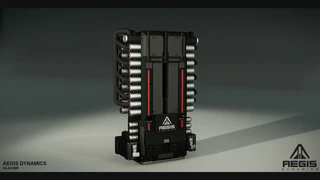
The concept team is growing, we have secured two new artists to join the team, one will be taking on the mushrooming list of props and the second chap will be tackling environments plus anything else we can throw at him :)
As most of you will know the Drake Dragonfly went out the door for its concept sale, all I want to do now is put the whole team on making the other manufacturers versions but that’s just my own wish and I hand on heart have no idea what the plans are for more (no really I don’t!).
Gav Rothery has just wrapped up a new ship that I think looks pretty awesome and we’re now focusing back on solving some Klaus and Werner FPS weapon designs and fleshing out the family (in addition to some work on the new corvette!)
A new small vehicle has also been worked up and passed straight to the production team – hmm I wonder when that’ll come out??..Ship items and props are ripping along and the whole universe feels like it’s starting to be more cohesive which can only be a good thing.
Also taking some time to work with Justin in LA and solve some areas of the Caterpillar that needed another round of attention and love – don’t worry owners, it’s mainly some shape language work to the command module and Turret – looks good, but then I’m biased!
Next month we’ll be addressing ship weapons and how to make more from less – watch this space.
Environment Team

The environment team has been working on many different tasks this month. As always the main production focus is on a sq42 level, and now we’ve started to move into the Final Art phase for most of the Shubin interior levels too. We are hardening up the Levski landing zone environment and bedding it into the procedural tech – feels really cool flying from space and onto a planet! Our lighting team has been blocking in some visual target areas for GrimHEX, this environment is shaping up and have a really good flavour to it. There is a demo coming up and we’re well on the way making sure we’re going to show you something special.
Props
As mentioned last month we have been on the final push for this batch of ship items. Shields, Coolers, Power Plants and Quantum drives are on their final art pass and we are just finishing up the last few Avionics modules, this should be complete within the next sprint (possible two…) and that closes off the first round of ship components.
We’ve had 3 new artists start in June so it’s been a busy few weeks but it is really going to help with supporting all the different areas of the game that require props and ship items.
Work has also progressed with the useable items which allow our players and AI to be able to fully interact with the props and environments, it’s a collaboration between the animation, design and props teams and will add that layer of natural interaction that will help to fully immerse the player in the game world.
With the amazing new procedural tech coming online we are looking at what we need to do to really push the visuals and work out what technical limitations we will need to accommodate when we ramp up resources for the feature.
Looking forward we are moving some of the team onto the smaller vehicle components to support the release of the Drake Dragonfly and pushing forward with the other ship item types while the rest of the team continue ploughing through our Squadron 42 prop list and as always do our best to squash any bugs with our live releases.
All in all, it has been a busy but productive month… and next month will be more of the same!
Spaceships
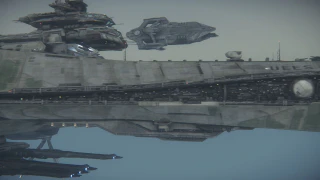
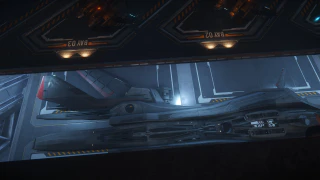
With another exciting month having gone by, the ship team in the UK has been plenty busy. We have made substantial progress on the Bengal with the main hangar, hangar lift wrapping up shortly along with the interior and exterior bridge of the ship. Idris interior does not have many more rooms left to do, with the team now focusing on some final polish before moving on to lighting and exterior damage.
Every improvement we make on the Idris will directly benefit the Javelin, one of the many benefits of using the manufacturer set to keep pushing the quality bar. Speaking of the Javelin, a lot of time has been spent finding the right look and feel for the hangar which is needed in both Squadron 42 and when it goes live in the PU. So capital ship progress is coming along great!
What about the other ships you ask? Well, we are happy to report that the Argo is wrapping up this week where we are left to hand it over to remaining disciplines and ensure it has everything it needs in order to go out to all of you! Several improvements have been made to the pod since it was last shown so keep a look out! We have also started production on both the Dragonfly and another vehicle, something we are all very excited for as it presents new challenges for us to tackle. The Dragonfly will be finishing its whitebox phase this week. Lastly, we are doing a lot of work to make sure the Vanduul ships look great, the UK team are focusing on the Driller (a carrier) at the moment. Every lesson learned here will allow us to share procedures and techniques across the entire Vanduul fleet!
Graphics
This month the graphics team have primarily been focussing on fixing bugs for the next release, and continuing with several major refactors to the underlying renderer code to pave the way for future features (e.g. improved transparency sorting & phasing out of DirectX 9 style code to help move to newer graphics APIs).
The gas cloud tech is also undergoing a major change to make use of a ‘bricked’ voxel format which allows increased detail in just the areas we need it. This is crucial for achieving details on very large gas clouds that would otherwise require a prohibitive amount of memory. The brick format should also allow us to make a number of optimisations where we can perform fewer calculations on large open areas.
The work on the improved HDR effects is continuing with upgrades to the exposure control system, but we’re excited that the new physically based bloom and lens flares have been enabled in the main development branch meaning this will be part of the next release to the backers. The new optical effects are faster than the previous effects, look much better, and crucially allow art to globally change the appearance of these affects with just a few button presses rather than having to tweak hundreds of individual flares. This is because the new flares are created in screen-space rather than being hand placed, and as a result we get flares off reflections too (e.g. when the sun reflects of the very shiny Starfarer).
Animation
This month we’ve been focusing in on the core FPS elements of the game. A new jump mechanic is being worked out, as well as testing stocked cover and blind fire and making tweaks where necessary to keep first and third person working well together. New pistol and stocked reload animations have been worked on to give a bit more weight and feel to reloading the weapons. We’ve been involved in testing the new camera and eye stabilisation and working our way through as many assets as possible to give a nice solid core feeling to the fps portion of the game. Selecting and deselecting weapons has been given another pass, working with tech animation we’re very hopeful to get a more polished 1P and 3P system online very soon. We’re excited with the progress even if there is still a lot more to come.
Engineering
Always seems to be a busy month getting a new release out, this time 2.4.0. As mentioned previously this was a large release for us because it’s the first time we’ve effected persistence in this production environment, and it changed the way a lot of systems worked, which in the long run is a very good thing but it was a major piece of engineering with a great deal of complexity.
Moving on from that we’ve been aware for a long time that some pretty hefty enhancements to CryNetwork would be required for a project of this scale, and getting 2.4.0 out really just re-emphasised this. CryNetwork was really starting to creak under the demands we’re making of it. We’re now chomping at the bit to start making a sustained effort on developing the new technology we’ve been designing on paper and proving it in the codebase. One such technology is the Global Serialized Variables which are designed to make the gameplay programmers’ lives easier and help optimise the network bandwidth. Previously when we were using “aspects” it is up to the gameplay programmer to decide what information needed to be sent over the network and then also to deal with both writing that information out on one end and reading it back in again at the other. This was always prone to mistakes in transmission because of the nature of network latency, which is unfortunately never really under your control. If you don’t receive, read, and parse the data in exactly the same manner you wrote it out you end up with a disconnection, which can prove more fiddly than you’d imagine. It was also very inefficient as if even one bit of data got changed the whole aspect block would have to get sent. The serialized variables takes all that away, the programmer just marks which variables they want to replicate to the server/clients and then the underlying system can just detect which have changed since the last time they were sent, and which haven’t, and takes care of the rest in a nice and efficient manner.
We’ve also been having problems with the underlying message queue which, although it would send packets through reliably, they wouldn’t necessarily come through in the correct order, and so you end up with a lot of code having to untangle that. Issues caused by this are very hard to track down and fix, especially within the real-time requirements of a multiplayer game, as by their nature they are completely random and the fixes tend to be horrible and nasty. We’re completely rewriting this message queue and it is going to be designed to better enforce the ordering and transmission of packets. This means we can make certain assumptions which will help clean up the codebase, for example if you get a message telling a player to respawn you know that the message killing them in the first place has already arrived and been processed. If there are any logicians out there in the audience, you’d love this stuff.
Otherwise gameplay progress has been ticking over nicely on all the usual aspects of the game.
Audio
Hello all! June was another busy month for CIG Audio. Here’s a breakdown of what people have been up to.
Sam Hall was mainly working on getting the dynamic bank loading to work as it should. As it stands, work is 99% complete, but we still need to deal with bank loading synchronisation before we can go live with it – this is to ensure sounds play on cue first time, every time.
Sam has also been optimising the Editor’s audio plugin start-up time to help with productivity. It now saves up to ten seconds every time the Editor starts up. Though this may seem inconsequential in the context of a single instance, all these periods waiting add up! (Think about how much time you’d lose in your own life if you had to wait at least ten seconds every time you opened your email or a Word document) Sam’s also currently working on improving the audio playback with the animation tool, Mannequin.
Graham Phillipson has been refactoring and refining the code to better support reverbs and weapon tails, to make transition between areas smoother and more “realistic”. Added more options to audio mark-up for how audio triggers begin. At the start of the month he got the prototype together for in-game VOIP which has wide-ranging implications for the persistent universe.
Darren Lambourne has been undertaking general maintenance of ship audio (improving sync on anims, bug fixing). Establish the audio structure (geometry and Wwise side) for the playable Idris, and working on designing the ‘tone’ and first pass implementation of the Idris ambiences.
Luke Hatton has been working on new explosion sounds so that smaller ship sizes (Hornet, Xian Scout, M50) aren’t quite as overbearing as the larger ones. He’s also been working on more pass-bys for the likes of the Origin M50; he’s currently looking at the pass-bys for the Starfarer, which require a different style because of the sheer size of the ship.
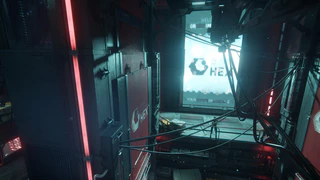
Stefan Rutherford has been continuing work on the GrimHex map, putting down the foundations there for ambience. We’ve changed our process quite a lot where ambience is concerned; this is a lot more spatialized these days rather than made up of ‘2D’ beds/backgrounds so that the audio is far more compatible with head-tracking based audio rendering (i.e. VR) and also offers more momentary variation and interest. Otherwise he’s been revising and improving upon the FPS weapons.
Ross Tregenza has been primarily designing a system that will play cool cinematic music in a self-managing and context sensitive way throughout the Persistent Universe. He’s been working with Pedro Macedo Camacho to get the new music in place and fine tune the system – it’s already sounding awesome. The dynamic music system is also starting to make its way into Squadron 42, where it’ll be used in tandem with bespoke set piece music for the most dramatic moments of the game. He’s been working with Geoff Zanelli on that content – again, already sounding fantastic, even in its early days.
Ross has also been working on ambient sound for a variety of locations across Squadron 42, and keeping the audio guys informed of any S42 based developments, as well as assisting the dialogue guys when possible to help progress the battle-chatter systems.
Simon Price has been improving scalability of the dialogue pipeline, migrating Ship Computer dialogue over to the communication system ahead of a refactor/standardisation. Also generally porting dialogue to use the CommunicationSystem to give designers more control.
Bob Rissolo – lot of prep and preproduction work for S42 shoots, combined with editing dialogue for cinematics, making progress on the pipeline tools and tech with Simon.
Phil Smallwood has been riding shotgun with Bob recently so as to assist him on S42 shoot dialogue capture duties, and undertaking some dialogue edit work too.
Matteo Cerquone started taking ownership of various sub-systems such as physics, character Foley, as well as assisting Ross with S42 sound design.
Ewan Brown has been implementing support for multi-positional sounds within the game editor, which is a neat optimisation that reduces the number of voices for a given sound, even if it’s assigned to play from multiple positions. He’s also been working on low level audio synchronisation and various Mannequin tool improvements.
Last (but not least), Jason Cobb has been hard at work at a whole list of tasks! He’s been developing audio build validation scripts, fixing voice leaks, documenting test cases for Flowgraph audio trigger fixes and more… real nitty gritty stuff that will make Star Citizen all the more immersive from an audio persiectve! He’s about 90% complete an area-based mix state mark-up for multicrew ships, and he has been investigating the same for single-seat ships.
VFX
As has been the case company-wide this past month, the VFX team has dedicated a significant amount of time focusing on asset clean-up. Specifically in our case, we have been making sure none of our particle libraries are referencing missing textures, materials, custom lens flares or objects. These are the sort of tasks no one looks forward to, but there is something quite satisfying about whittling your way down a long error log list! Caleb in Frankfurt has been working hard on this, so no doubt he will elaborate on this process.
As well as this, we have been performing other general maintenance tasks such as converting various assets – smoke, fire and explosions in particular – over to the new heat map/gradient tech we now have in place. This is an ongoing process, as there are loads of legacy assets we want to convert in order to take advantage of the new tech.
Speaking of which, the new heat maps and gradients tie in beautifully with the optical bloom and flares that you will hopefully see in the next live release, as well as the tiled particle lighting we mentioned briefly in last month’s report. It’s been a long process getting all this tech to come together, but we feel confident that in the long run you will see a big step up in the quality of our effects!
In terms of new content, more work has been done on weapon impact effect variants, a polish pass on a new laser cannon, and an environment VFX pass for a new PU location. Finally, we have done an effects pass for flight-ready Reliant.
As always, busy busy busy!
Design
It’s been a busy June in the design department here in the UK. The Live team have grown to 4 full time designers and will be 5 in mid-July. I don’t want to spoil anything so I will just say that they are all working flat out working on expanding the content for the 2.7 Live release for the Stanton System. There is a lot of cool stuff going into that release on the systems side that we are excited to get out into the community, such as the new landing and take-off work that is being implemented by Craig. As of me writing this it is all using placeholder (programmer art), but are hopeful that Zane and crew will be able to take a pass at it before it is released into Live.
The systems design team have been working on MobiGlas and particularly the StarMap app, which is looking great as a portable version of our favourite web app.
As you will probably see from other reports we are refactoring the AI system for both combat and interstitials into one system called “Subsumption” that will systemically deal with a huge variety of different AI states. While this has affected some of the progress on a few S42 levels, it is looking hugely encouraging for the levels as a whole, cutting down massively on a lot of complex and sometimes fragile bespoke scripting from design.
The Tech team are working on the various ships and vehicles and we are hopeful to get the DragonFly, which is feeling very fun and different to what you will be used to, into the live stream soon. We are also almost there with the Argo light utility ship!
That’s it for now, except to say a big thanks as always for your fantastic support.
QA
UK QA have been very busy over the past month. Our primary focus was getting Alpha 2.4.0 out of the door. This required us to work in sync with our ATX counterparts, as well as the select backers in the Evocati group. As you’re no doubt aware, Alpha 2.4.0 is probably our biggest update since 2.0.0, with the introduction of shopping and persistence to Crusader, as well the Starfarer and Starfarer Gemini, our biggest flyable ships to date!
Alpha 2.4.0 is now in your hands, and has recently been patched up to Alpha 2.4.1 in order to extinguish a nasty infinite loading screen bug and an issue with ship persistence. We have continued to monitor the Live build, gathering feedback from you guys, as well as looking into issues that only seem to arise when the game is out in the wild.
Beyond that, testing on Squadron 42 continues as development ramps up, with our dedicated Squadron 42 testers performing daily smoke tests to help the devs narrow down on persistent issues. Adam Parker, our resident ship expert, has been putting the Reliant and the Argo through their initial paces. Mark Tobin, FPS extraordinaire, has been leading initial group tests on the FPS systems. Mark White, one of our seniors, has been testing additional systems you’ll be hearing about shortly!
FOUNDRY 42 DE
We Create Worlds, Spaceships, Characters, Star Systems…
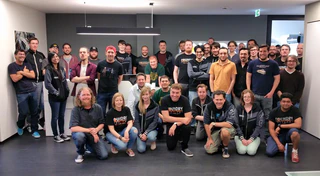
The Frankfurt team is running at full capacity, we have 49 desks in the office and just signed our 49th employee. We’re very selective on who we bring in, and have had a large amount of interest on joining from people worldwide. We’re also an extremely diverse group, made up of 13 different nationalities I believe. Luckily we planned ahead and as I previously mentioned we’re expanding our office space. The extension will hold an additional 25 people and will be ready for us on August 1st.
We’re getting closer to showing off more of our progress, and look forward to getting stuff in your hands. See below for a portion of some of the stuff we covered this month, it’s impossible to put it all, but gives you a sense of some of the larger items.
Weapons
Last month the weapon art team has been hard at work polishing up the existing Behring ship weapons as well as making a new Size 5 variant. On the FPS side we finished the ballistic Smart Ammo and the 1st pass texturing on the Behring P8SC submachine-gun. We’re also in the process of updating the Behring Pro-Line grenades and finished the 1st pass model so it can be rigged, animated and tested.
Quality Assurance
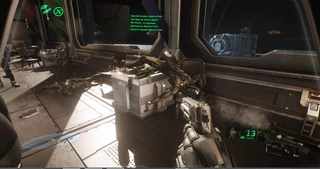
DE QA is happy to welcome Glenn Kneale as the newest member of our team! Glenn joins us from our CIG-UK office in Wilmslow, and he will be our new QA Technical Lead in our Frankfurt office. Glenn started the month by setting new grounds in personal development for the EU QA Technical team. New procedures for reporting have been set in place to ensure all information and progress is shared seamlessly across the UK and DE offices. DE QA also continued to spend the majority of the month of June testing the procedural planet together with support from Mark White in the UK. We also worked together with Marius Airinei to identify and debug a crash on the Crusader public servers. The crash was related to missiles being fired at other ships, and the reproduction rate is painfully low. We managed to repro the crash on the 2nd day of testing, and we were able to provide Marius with the information he needed to work toward a solid solution. Chris Speak has also been helping Ivo Herzeg by creating physics test maps, which Ivo is using to test both physics enabled character ragdolling and physicalized objects such as bottles, chairs, and other in-game props (see image above). The next few months will be focused on ramping up our testing for Gamescom 2016 together with UKQA and ATXQA, and we cannot wait to share what we will be testing – it is truly something to look forward to!
Cutscenes
The cutscene team spent the beginning of the month prepping material for a new Mocap shoot. A few key members headed to the UK the last week of June, and will return to Germany in a few weeks when the shoot is over. This is the last fully scheduled shoot for Squadron 42, with the possibility to return for a pickup shoot if needed. The Animators on the team also spent some time this month supporting the in-game animation team, as well as doing some animations to test out NPC head looks.
Engine
This month Ivo continued to work on smoothing out bits of the animation code, working on head-bobbing, Eye-Stabilization, and Head-stabilization. He’s made great progress and we’ll have something to show off in the very near future. We’ve also made some good leaps on the Procedural Planets and toolset for artist behind it. The tech team is excited to show off what they’ve done, and we’re getting close.
Rotating VisAreas: We worked on support for Rotating VisAreas. A VisArea can be thought of as a room with windows, which allows us to cull away all objects not visible through the windows (classic portal culling). So far VisAreas were 2.5D Shapes (polygons with a height). This was fine for our use cases so far: Regular flat levels like Area18 and Ships, where the VisAreas are part of the local reference frame and hence are still 2.5D, even if the hosting reference frame is rotated/moved. But now we have planets, and planets are round, which brings a new challenge. To allow us to use VisAreas on planets, we had to implement support for rotation. This was implemented by keeping the 2.5D representation but adjusting all the checks to be in VisAreas space, hence transform each point into the space of the visarea before it is checked. Doing it this way allowed us to keep all current VisAreas setups, and just extend the functionality.
Tree-ification of the ZoneSystem: The ZoneSystem was started as a spatial data structure which replaced the octree we used for fast culling for rendering. Such cull operations are mostly “large”, meaning they tend to cover a large area. Now the ZoneSystem (as planed from the beginning) is being used for more and more systems. Most of those systems tend to do “small” queries, like finding all objects in a 2m x 2m x 2m box with Tags [x,y,z]. The ZoneSystem is now responsible to find all objects in the whole universe inside this box extremely fast. When we experimented with this, it turned out that some parts of the ZoneSystem still utilized a linear search, and those didn’t scale well in our large universe with such small queries (large ones had enough other cost to not notice those issues). Hence we extended all internal data structures to utilize AABB trees, allowing us to more quickly exclude objects improving the runtime from O(N) to roughly O(Log2(N))). As this was a very complex change, since such tree structures must also be maintained in an efficient manner when some objects move, it took some time. But we are now in the final steps of local testing and so far it looks very promising and to give us the performance benefits we were aiming for.
Tech Art
Did a good amount of support to the Engine team on various things such as head stabilization. Also continued to support the weapons team, rigging new weapons as they get completed. Did some weapon select and deselect RND on animation driven IK, with the goal of getting them to look smooth in various frames of the animation while still being as responsive as they need to be. Also continued to address any and all bugs or issues from the global team.
AI
Let’s start this monthly talking about Subsumption and the mission system.
Subsumption has received a lot of attention this month, we first of all worked a lot with Tony Zurovec to introduce several features in the tool, then connect them up into the system code.
We introduced the concept of tasks with parallel children: when creating a subactivity, we can connect several tasks one to the other to create a chain of operations the NPC will then execute. We can now create archetypes for tasks that can actually serve as fathers of multiple children tasks: they manage the lifetime of the subtasks, how those tasks are executed in parallel with the father, and what to do when the father is interrupted.
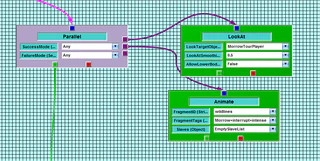
In the picture we can see a node that executes in parallel specific subtasks, and it succeeds as soon as the one child succeeds and it fails as soon as one child fails.
Any node can be setup to have parallel children, but the actual task is totally responsible to define how the execution takes care of the children itself.
We also developed the concept of Checkpoints and Goto tasks.
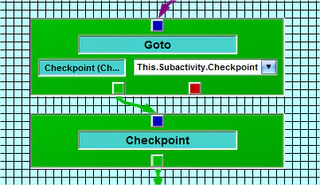
A checkpoint is a way to store specific points in the behavior from which it’s safe to restore the execution at a later time. Any time a Checkpoint task is hit, then the system automatically stores that entry into the internal This.Subactivity.Checkpoint that can be then used by the Goto task. This allows us to create jobs that can be interrupted and resumed, we can perform operations in the middle of longer behaviors and resume the old tasks as soon as possible.
We introduce the functionality to handle specific events in the subactivities directly so that we can decide whether we wait to finish some operations before reacting to some events. We also started to work on the core code for the Subsumption Mission system: missions will sit on top of the normal NPC activities. Game and level designers can create their mission influencing the population of the level, the schedule of the NPCs, setup objectives and a lot of additional things. We hope to show you some screenshots about the mission system soon!
We’re close to complete the work on the local navigation mesh to allow characters to move inside moving ships, planets, etc. Regarding the spawning system, we moved the definition of the spaceships’ crew into Dataforge so that designers can easily setup this content without manually editing an xml or any configuration file. We also started the work to properly unify the code paths that spawns characters and ships.
Regarding the communication system we’re working close with the audio engineers to support properly external audio files that can be played through WWise, we also developed some new debug draw functionalities to help designers keep track of the dialogues used, the amount of times they are triggered, and so on.
This month we also worked on the ships behavior to properly support strict limitations on the flying behaviors: boundaries have always been considered as a soft limitation allowing ships to leave the assigned area to enter it back immediately after the restriction was not respected. We introduced improvements to the ships behavior to properly react to the target leaving the restricted area they might be assigned to, we introduced a new “boundary patrol” behavior that will trigger once the target cannot be reached due to “external” orders to the running behavior.
As usual we also continued on improving the stability of the overall AI system and to fix as many bugs as we could!
Design
On the System Design side we’ve focused on figuring out how our Vanduul behaviors work, what makes them special and unique compared to fighting against a human opponent. These guys need to offer the players a complete change of combat style where they will have to adapt to a faster paced, more explosive and melee heavy combat compared to their human enemy counterparts.
We are reworking the way docking in stations will work and all the services that will be available to you and your ship once docked. We’ve seen big problems with players not having enough landing pads so we are designing an automated system that will handle how pads get allocated, how you dock, undock and how your ship is stored once you get out of it. Our main goal is to get players and ships off the docking hangars as quick as possible to free them up for the next player that might want to use it.
We are starting to design the overarching security and criminality systems that will help us detect wrongdoers and report them to the NPC authorities who will take action. The idea is to, while still being lenient towards a player who merely errs occasionally (i.e. honest mistakes), have the world react in a ruthless way to people who abuse other players or do things that they’re not supposed to. The main goal is to make this part of the world so the NPCs take matters into their own hands based on the local law of the region of space rather than us developers having to police abusers. (Let’s face it – the devs and game support are always going to be very outnumbered. While we of course care about our players, we can’t personally be everywhere at once, so the system must have some ability to take care of itself)
The FPS suit is also getting a rework and is heading towards a more modular approach where players will be able to switch components and adjust it to what they need, be it combat or otherwise. At the same time we are looking into developing a new breed of modular deployable gadget that the players can customize as they see fit.
Work on out of combat human behaviors continues and we hope we can show you guys something as soon as the stuff comes online.
Level Design has finished the design of the lawless base we mentioned in last month’s report, and have been supporting and overseeing the art and design teams who are taking that whitebox design to completion, both at Bhvr and in the UK studio, to communicate the vision and ensure that the core design is preserved throughout the hardening phase. To make sure we could hit the 2.5 release with the lawless base we split it into tiers, which we can focus on one at a time. Expect to see that location evolve in steps over the next few major releases, with new areas opening up and interesting opportunities unlocking as we progress.
We iterated on the design of Levski (initially based in Nyx) to prepare it to be placed down on the Stanton planet. This involved adding extra hangars for parking, new road access and parking for visitors coming on-foot or driving on the planet surface to the mining base, and adding bedrooms for players to be able to sleep and respawn there. It is now in the artists’ capable hands to bring those additions up to the quality of the rest of Levski, so we can finally enable players to land on a procedural planet and have a first landmark to visit there. These days we’re digging more into modularity for building locations quickly and efficiently, focusing on service stations in particular.
We have also seen two new LD recruits join our ranks, Ben and Tobias, and focused on on-boarding them: getting them up to speed with the engine, designing practice levels to wrap their heads around the intricacies of Star Citizen and space environments, and generally welcoming them in the family.
BHVR
No Time Off For Good Behaviour!

Behaviour Interactive has been busy working on some thrilling content you’ll see in Star Citizen Alpha 2.5. Here’s the rundown:
Engineering
In June we integrated the last feature missing from the optimized Hologram framework: Render to Target. This should significantly affect ships using on screen Holograms (like the Constellation, Retaliator, Aurora) and enable much better framerate. Not only that but other ships which previously displays empty screens (Vanguard, Sabre, Avenger, …) will now correctly display Holograms.
A lot of polish and bug fixing went into shopping as well. The mobiGlas shopping application will give better feedback on the status of your purchase request. You’ll notice that armor racks will display a full mannequin when trying them on instead of a floating head. All of this and more solid server and client fixes for improved stability.
Design
This month was very exciting working on the new outlaw space station. We finished working on the shops, Francois Boucher and Jesse Kalb respectably taking care of the clothing store and the personal weapon store. The artists did a fantastic job working with the tight layouts and they look great. We also worked on future shop locations for this space station and their whiteboxes are well underway.
Overall, we spent a lot of time in the Outlaw space station, fixing collisions issues, setuping gravity, kill triggers, airlocks, spawn room and logic, landing pads and a bunch of other things. I expect us to continue working on that location for a while, adding more and more and keeping it top notch.
Art
This month we continued working on a map from the previous month, an abandoned imperial asteroid base now occupied by “new” denizens.
Aside from finishing the remaining undefined structures and visuals, we’ve spent a major portion of this month polishing the environment. We took the designer’s vision and added a slice of life to the map.
The key focus of the polish was story telling. We wanted the environment to give clues on what happened in different sections within the map. The visuals for habitation pods, for example, reflected purposeful rearrangement of furniture and objects after the pods were constructed, as if dweller groups in different pods were trying to differentiate themselves from others, some sort of gang mentality perhaps.
Shops, on the other hand, contained objects that showed how the shop keep conducted business, how he went about his daily life outside of the business, and ultimately, how he left his mark in the forgotten stories of the abandoned base as time passed.
Per the same level of detail in other maps we helped create, expect landing pads, hangars, the exteriors/interiors to be full of its own life and style. We also added a bit more polish on a mining world we previously helped create. Stay tuned.
TURBULENT
Atomic Batteries to Power, Turbulent to Speed!
Greetings from sunny Montreal! Here’s what we’ve been up to in the last month:
Multi-Factor Authentication (MFA)
Last month, we completed the QA phase with the help of the CIG team. We are getting ready to launch MFA for the website and game launcher. In the first phase, you will be able to setup MFA with an email address or by installing our mobile app. If you’re new to MFA, don’t worry, we’ve got you covered. There will be a post and tutorial explaining everything, plus a new FAQ page that you can consult at any time. This extra security is optional, but it’s easy to setup and will further protect your information and purchases.
Communication Platform
Internally, we are releasing a functional version of our new communication platform, which includes chat and the new forum. This will go through internal QA only. In the meantime, we are continuing to work on adding features to the platform, such as bookmarking and search. We are eager to share this new platform with the fans, but we have a ways to go yet. Well worth the wait, we can assure you!
Game Launcher
For those of you who’ve been following this column regularly, you know that we have been working with CIG on the new version of the game launcher/patcher. There’s a heavy-duty feature list, and we’ve been listening to CIG’s requests and suggestions. Development continues at a healthy pace, and we’re targeting to release a first version by end of summer.
If you’re new to this column, the new game launcher will support multiple environments (e.g. PTU, live) and multiple games (e.g. Star Citizen, Squadron 42), and will allow for background patching. The interface will be the same as the current version, but future iterations will include more features.
Ship Happens

June was an exciting month for ship sales. Towards the end of the month we were introduced to the Dragonfly, a speedy little ultralight ship with attitude, to be used as a solo rider or as a swarm of Dragonflies. Two versions were put for sale: a sleek, stealthy looking black version and an in-your-face yellow version for those who want to be seen. Not only were these two variants for sale, but we also saw the return of the Caterpillar, both by itself and in a special package with both Dragonflies and LTI for all three ships; a very exciting combo!
COMMUNITY
Best Damn Space Sim Community Ever
The community that never sleeps. Serving a community in as many different time zones, continents and countries is an exciting challenge every month, and in June, we began to restructure our output to better serve the wider audience.
Day-to-Day
June was a month of focused efforts. Work continues on developing the Gamescom presentations for August, including our first real convention showfloor booth, modeled to invoke a sense of the bridge of an Idris. You may attempt to read into that what you like, but we promise it was just a matter of saying:
“Let’s do a fancy booth this year.”
“It’d be cool if it looked like the bridge of an Idris!”
Sometimes, it really is just that simple. =)
In addition to having a cool booth, we’ll be livestreaming gameplay from our latest builds on the showfloor itself over the course of the five days. While it’s still too early to say what that will involve, we’re looking at it as a chance to hang out with our fans both in attendance and abroad, give away some ships and swag, and simply celebrate how far Star Citizen has come in the last year. We anticipate broadcast times will match those of Gamescom operating times.
Broadcasts
June was dedicated to our run-up to our Around the Verse 100 Celebration, with a concentrated effort towards building out the video infrastructure necessary to expand and encompass our studios around the world, in addition to improving the overall presentation of our releases. Many of these changes won’t be visible to the public until July, August, and beyond, but the work that lead to those changes was a strong focus in the month of June, and you can see the beginnings of that work in Around the Verse 100 released on June 30th.
We look forward to sharing the new broadcast plan in the coming weeks once additional details are further cemented.
You Guys
As another month of development passes, so does another month of stories, content videos, and community accomplishments!
Last month, we highlighted the PTU testers, and we have to highlight them again! You all have been an extraordinary help in June, assisting us with getting SC Alpha 2.4.0 and 2.4.1 out the door! Your tireless effort has been greatly appreciated, and we plan to continue utilizing the PTU environment and our Evocati test group in future patches. Thank you!
On the streaming side of things, we were very happy to see the long-awaited return of Geekdomo’s always entertaining stream, Starcast. In addition, we want to give a huge congratulations to Farasalt for taking his streaming endeavor Full-time!
The Austin, TX Bar Citizen events continue to raise the bar every thanks to the amazing efforts put in by Scrapped, Pyrothoric, and Gany. The evening was Jam-packed with good drinks, good people, and of course, a lot of Star Citizen discussion/theorycrafting. If you have not been to a Bar Citizen before, we highly recommend seeing if there is one in your area! Great job guys!
On the Community Hub front, we continue to see incredible content flowing in! Terallian continues to develop his Star Citizen cinematic videos that we all love to see. This guy started learning the Cryengine only 2 months ago, and every video he puts out just gets better and better! Simoniac and Octacube pulled out all the stops by releasing his USUK Hauling Interactive Starmap that left us all in awe! If you have not seen this thing, you need to stop what you are doing and jump on the Community Hub ASAP! Fantastic work Simoniac!
This community is packed with talented artists of all forms, and we are looking forward to seeing what you all do in the month of July!
THE WRAP-UP
Looking Ahead
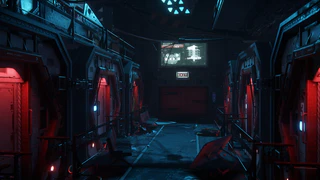
What comes after Alpha 2.4? Alpha 2.5, of course! 2.5 is going to add a major point of interest to the Crusader area: the GrimHex pirate base. As we continue to develop our reputation and faction system, we need a place for pirates to call home rather than having everyone on Port Olisar together. So we’ve built a very cool station with some exciting features you’re going to enjoy. 2.5 will also feature the flyable Reliant and a number of other updates we’ll be discussing in the coming weeks.
It’s also full speed ahead for Gamescom! Cloud Imperium will have a booth on the showfloor to show off Star Citizen, and there will be several chances to catch up with the team outside the convention. Expect to see more details before the next Monthly Report is due!
